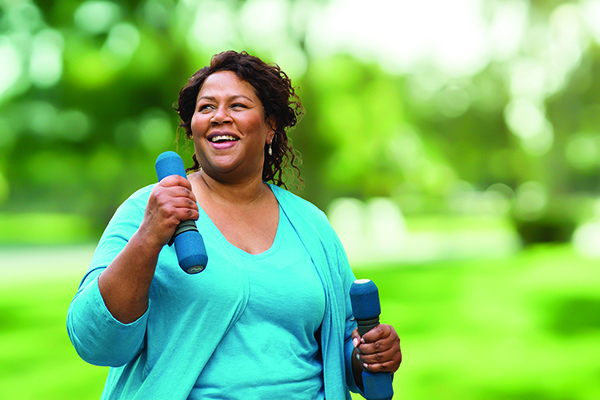Written by Steven Burns
From his column To Your Health
 So, are you exercising, and why not? That’s a question I frequently ask my patients, playfully and yet seriously. I have seen many of them for decades, and the activity question is one we address at least once a year at their physical exams. Some have responded by starting an exercise program, but some dutifully listen to my pleas to get active with both of us knowing I’m talking to the wall.
So, are you exercising, and why not? That’s a question I frequently ask my patients, playfully and yet seriously. I have seen many of them for decades, and the activity question is one we address at least once a year at their physical exams. Some have responded by starting an exercise program, but some dutifully listen to my pleas to get active with both of us knowing I’m talking to the wall.
Physical activity or exercise has long been a mainstay of good health, and yet some people avoid it. “I just don’t have the time,” I hear, or “It’s too cold or hot or muggy or dry or dark or bright outside.” The excuses are endless, and sometimes I feel like a schoolteacher as students explain why they didn’t do their homework.
One of my pastors used to say, “An excuse is the skin of a reason, stuffed with a lie.”
Some excuses are more reasonable than others. Those with arthritis struggle to exercise because of joint pain. Certain illnesses cause weakness and unsteadiness. And yet, those who want to exercise frequently surprise me with their ingenuity. They walk in a swimming pool to reduce pain in the back or knees. They use a stationary bicycle or elliptical to ease joint impact. I have a patient who uses a hand bicycle, because he is paralyzed from the waist down. People walk with walkers, canes, and (my favorite) hiking poles, to combat unsteadiness. Some of my older patients do chair exercises.
How can we continue to be active in the time of pandemic, when the gyms are closed or attendance at them risky? I’m glad you asked. Walking out in nature, not on a treadmill, exercises all the right muscles, and if you walk quickly enough, increases heart rate.
The CDC recommends this: “Older adults should move more and sit less throughout the day.” Their recommendations are widely quoted in articles on exercise, especially in people who are over 65. For those in generally good health with no physical limitations (the 10-year-old corn on your foot is not a physical limitation), the CDC recommends 150 minutes of moderate exercise, like brisk walking, per week. That’s five days a week, 30 minutes per day. In addition, they recommend two days of strength training, which would include weight lifting and exercises that use your own body weight, like squats, lunges, push-ups, and so on. The strength training should exercise all the major muscle groups. Using elastic bands can substitute for weights, and they are less expensive than home gym equipment.
The benefits of exercise include improved heart health, reduced insulin resistance, prevention of falls, and lessening of anxiety and depression. For my patients who deal with emotional challenges, I tell them exercise is an excellent antidepressant. It can increase dopamine and serotonin in the brain, which is literally the function of most antidepressants.
What if you have physical limitations? Heart disease can complicate exercise, even though exercise after a heart attack has shown benefits in quality of life, cardiac output, and lowering of all-cause mortality. Cardiac rehabilitation is an underused resource for post-myocardial infarction (heart failure) patients, and it can be ordered by your cardiologist or primary care physician. While exercising, therapists and trainers can monitor your heart to help design an appropriate home program for you.
The CDC recommends if you are limited by arthritic problems and other painful conditions, increase exercise as much as you can. I have patients who do laps around their house—with their walkers. Just getting up and moving is helpful.
What if you just don’t like exercising? For most people, my response is: “How do you know? You’ve never tried it.” Start today to find something you like to do. It can be walking with a friend. Or hiking. Or reading while on a treadmill or stationary bicycle. Get a dog, for heaven’s sake. They love taking walks, and can provide companionship and a stimulus to get out of your easy chair. Our younger Corgi gets me out of the house every morning for a 2-5 mile walk. And Corgis can exert a tremendous amount of guilt in their humans when they don’t get their walks. Exercising with a (human) partner can also be helpful, and even in the time of pandemic, you can safely walk outside with some distance between participants, and solve the problems of the world while you walk.
For strength training, there are inexpensive or free websites and apps for your phone or tablet, with a trainer who will lead you through exercises to help with muscle strength. These are available for all intensity levels.
Again, are you exercising, and why not? Start today!
Dr. Steven Burns is board-certified in family medicine and has been in practice for more than 30 years.
Opinions expressed are his own.
